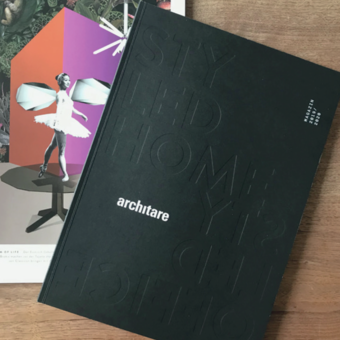As a sensitive and creative mind, ARCO’s CEO and head of design Jorre van Ast brings his working spirit to an early-morning talk with Barbara Benz
At the tabletop of Arco
At the age of 31, Jorre van Ast (*1980) took responsibility of his family’s business, ARCO. He is the fourth generation in line. This Dutch premium brand became world famous for its functional but understated design in wood. ARCO’s tables are described as classic statement pieces. Here we have Jorre van Ast talking with Architare CEO Barbara Benz: On design heritage, his experiences at the Apple HQ, the meaning of tables and homes – but also it comes to his two young sons that make him the most happy family guy ever. Which is not the worst way to run a family business.
You were 31 years old when you took over ARCO. Are you already getting grey about it or was it always on your mind to get into that family business?
I studied product design, and after I had finished this I wanted to work with both creativity and technology. Coming from industrial product design I did not have any touchpoints with furniture. I had developed bicycles and designed packaging for postal services or household accessories …

Things were changing and I was ready.

How did that change at the head of ARCO work?
We had a very brief overlap. And we look very much alike. We have similar characters … And so after all we decided that it would not be the best idea to work together. Although we love each other and our relation is good. But my father also had the feeling that he was done. He wanted the company to move on, taking chances. Things were changing and I was ready – here we are now.
When you talk about things changing. Would you say “that is a real change I did” or do you approach challenges like your father did before?
I had a whole lot of new ideas. And I intended to do all in a different way. (He laughs) In fact we have a huge tradition, and when I came there was a beautiful, very solid, and healthy company. So there was no need for a radical change. On the other hand I am part of a different generation. And I took the chance to build upon a great fundament bringing in some younger designers. But this complete thing is still ARCO. So people recognize some changes but still understand what is going on. One thing that might be significant is that I put a little more emphasis on communication like telling our story, unique products and the quality: E.g. who we are, where we are from, and what in fact we do.
And I intended to do all in a different way.
This input is important to communicate a brand and its intention. But you talk so much about design, so I ask myself who is doing the figures. Can you calculate?
The figures? – Okay. I can count. (He laughs) So. What I decided very soon after I took over was that I did not want to run the company all by myself. As I am trained as a designer I asked myself what I was going to make of it, would I become a general manager or should I stay closer to where my heart and my background are. As a result of this I run the company together with someone who is focused on operation. And I am more focused on the collection and creation. We are a great team.
Which means to have more different kinds of people working for ARCO?
Yes, we need different skills today. And on top of it all that is what makes things interesting: Combining the old with the new and by that exploring new directions. That is what we call new properties.
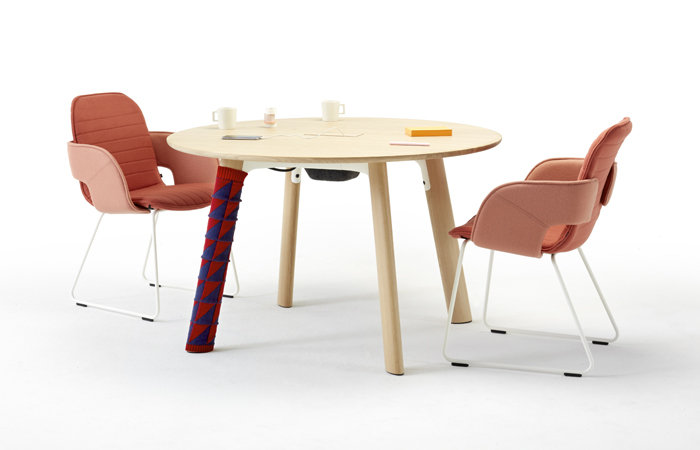
It definitely goes not against digitalism.
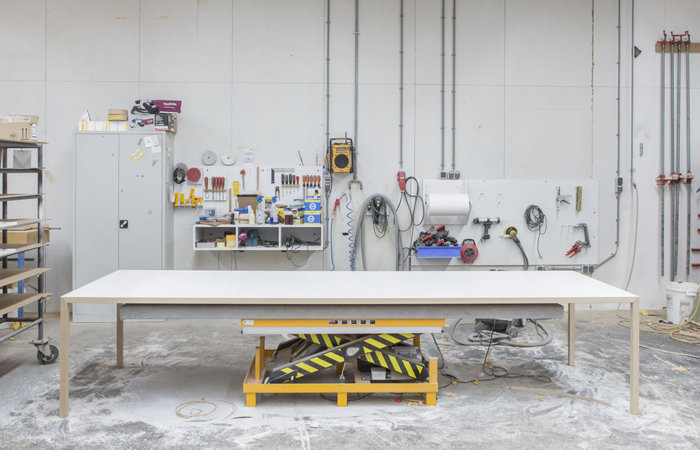
Does that mean to go forward with digital work or merely against it?
It definitely goes not against digitalism. It is always about how to get the best of the two worlds and how to combine them. I believe in craftsmanship and technology. They have to go hand in hand. Craftsmanship alone will not make it. Neither does technology on its own. The challenge is to find the perfect combination of both.
Was this attitude important for your Apple deal?
It all started with a small request from their side some five or six years ago. And it gradually developed. First it was about the Essenza table and from one thing we came to another. And it then became some ambitious collaboration.
So, of course, you are proud to know your tables at the Apple headquarter. But have you also been there?
Oh yes.
How did that feel?
I loved it as this all seems to be a big park. Even inside the buildings they have a lot of beautiful trees. But not only that. Everything is designed in this building. They thought about every detail.

Could you imagine to work there? Or even to implant some of these design ideas into your working space?
Oh yes, I could work there. Taking their ideas to ARCO in the Netherlands is a question of mentality. They think big. I ask myself, whether this goes with us or not. They are always pushing the limits. And they always question what is possible, and if something is not possible, – they ask why. That is basically how they are built and develop.
But it is obvious that they are fascinated by the classic Essenza table.
Not only. They ordered Essenza tables and some special editions. And we also developed some custom pieces in collaboration with Foster + Partners.
Is that model Essenza XL also your personal favourite piece?
In fact I love the new version with that small dock and the character of its wood. The Essenza is going through a renaissance after it was for about 18 years in our collection. But it is also the model that was selected by Apple for their new headquarter. And with the start of this collaboration that table started something like a second life. Because from that on we received a lot of special request and did a lot of tailoring and special solutions. Although that table was designed about 18 years ago, and at that time this huge table which we now know as the place where everything happens was not that kind of a topic in the meaning of today. Back then in tradition people wanted a dining table for the dining room, a kitchen table for the kitchen and a work desk for the office. Now we experience an open house planning with a dining table in a kitchen that can transform into a work desk. Everything is connected with a big table in the middle of it all. So the products we developed throughout the last few years were based on the demand for larger and larger tables. And though the original Essenza was already large, but still of a smaller size than the new models, its construction was not meant to grow any longer. So we had to reconstruct and reengineer it.
With the start of this collaboration that table started something like a second life.
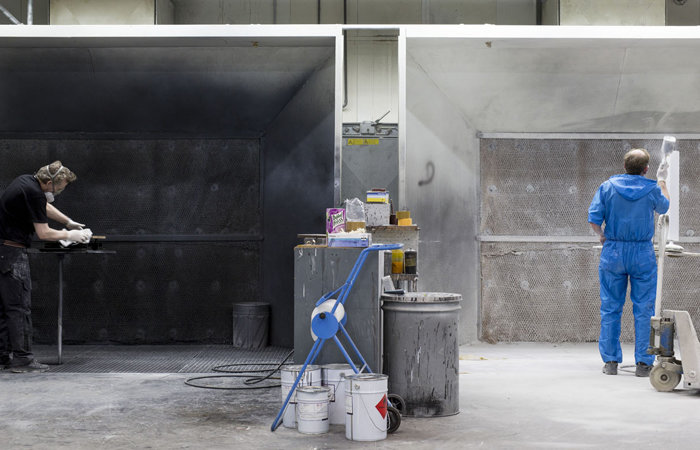
Which brings us to materials. When you produce in wood you prefer to use wood from your near surrounding. How did that come?
It all started with a visit at our wood suppliers. I then joined my dad. And very quickly I got the insight that all of the wood we used either came from France, the south of Germany or from Czech Republic, which is Europe but still very far from our production. The reason for that was my dad’s seek for premium quality, meaning AAA-wood. And if it still had a defect we would cut that out. Maybe that does not fit into the times we live in now. Wood is a scarce resource, especially oak. For that we always had to travel far. So I thought: Why can’t we look for the best quality in a different way? Why don’t we take a whole different way? Maybe we can look for the best quality in our area. The Netherlands are not known as a wood country like Germany is. Okay.

You have no Black Forest …
Of course. And we do not have your knowledge in foresting. In the Netherlands we do not even have such a foresting system. So it was a real challenge. But I kept on developing a local supply chain.
How did that work out?
Naturally we could not restrict our research to the Netherlands. Since we are close to the border we still get wood from Germany. But I would claim that as one region.
And from that wood you create tables for generations. Why did it all lead to tables and not cupboards or shelves?
That is how it all evolves. The company started with making picture frames. From those picture frames we came to small accessories and boxes. Then soon from there we came to small coffee tables, small dining tables. But this has always been our strength: Let’s look what we are best at and then let’s go with that. And I like tables. Just think of all the activities that happen around the table. See us sitting at this table and having a conversation. During a day there are so many different activities that need a table: work, eating, reading newspapers. A table makes you feel home.
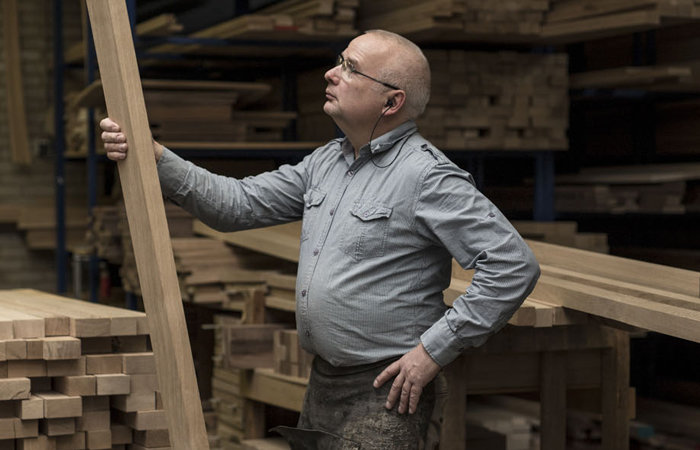
And what means feeling at home to you?
To me there are two ways to come to a rest, or to find peace. First is when I can get out into nature and do sports. I love to surf which is to me the ultimate way to relax. And then there is my home. Where I have my family with my two little boys of three and five years of age. We come together at that huge table in front of our open kitchen. It is a lovely combination of living, dining and cooking. To be honest I always love it when the kids are in bed and I find some time to listen to music.
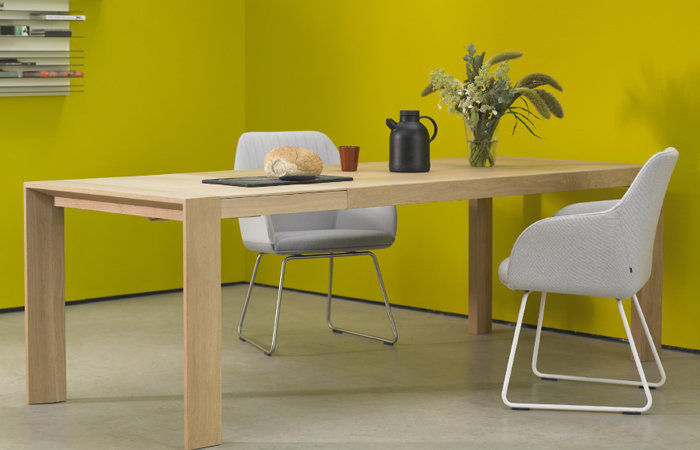
Let´s look what we are best at and then let´s go with that.






